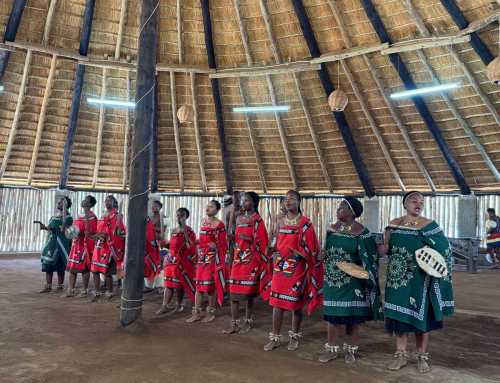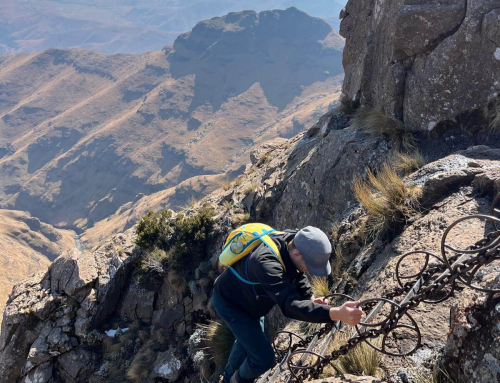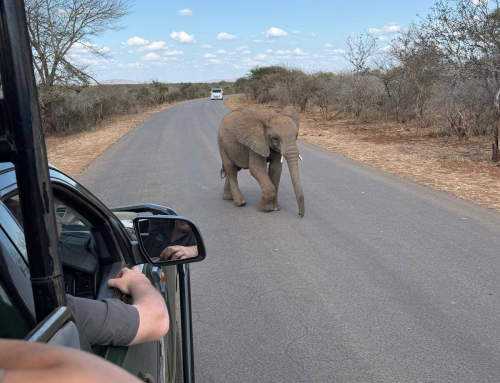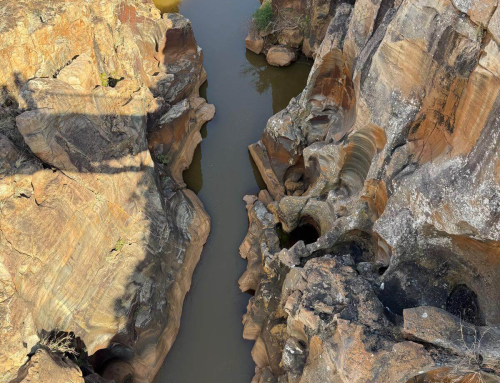Things You Need To Know Before Going to South Africa
South Africa holds an awe and wonder for many people, like us, who’ve seen pictures of the safaris and cannot comprehend being that close to wild animals. And let me tell you, if you even just slightly enjoy animals or nature, this is the place for you. Great care is taken to preserve the animals in their natural habitat, not in zoos, which makes for an authentic viewing experience. That combined with the beautiful and diverse natural surroundings which are so varied throughout the country, make an excellent choice for your next adventure! So let’s dive in with some Things You Need To Know Before Going to South Africa
When to Go to South Africa
South Africa is located in the Southern Hemisphere. Reminder: this means that the seasons are opposite of the Northern Hemisphere. The peak tourist season (and higher prices) coincides with their summer (Dec-Feb) as it’s a popular time for both South Africans on summer holiday (and school breaks) and visitors who are seeking warmer weather. But peak animal viewing season is their winter (June-August) when the bush is dry making it easier to see animals at the watering holes.
Generally the seasons are:
- Summer (December – February): Hot and humid with occasional thunderstorms.
- Autumn (March – May): Milder temperatures.
- Winter (June – August): Dry and cool, except for the Cape which has winter rainfall.
- Spring (September – November): Blooming flowers and warming temperatures.
We visited Johannesburg, Blyde Canyon, Kruger, and Drakensberg areas in August. We were surprised how cold it gets at night, near freezing, which you feel since most places don’t have central heating. And then we were even more surprised at how hot it gets during the day in the direct sunlight. So come prepared with many layers.



Languages and People in South Africa
South Africa has 12 official languages. Yes, that’s right. With so many languages, it seems to be that English is a middle ground for most. You’ll notice right away that signs are in English and almost everyone offered help in English. The South African people tend to be very jovial and funny. They crack a lot of jokes. So be prepared for some light hearted banter with a smile. Everyone was very kind and friendly.
Visa and Airports for South Africa
South Africa is a very welcoming place. Most nationalities are offered visa free travel for up to 90 days when entering South Africa. It varies between 30-120 days and there are some fees for certain countries but overall this made the immigration process very easy upon landing at the airport. While there are several international airports in the country, the two major airports are located in Cape Town and Johannesburg, with the latter being the largest. Pro tip: Johannesburg is higher in elevation at 5,700 feet (1,753 m) which is slightly higher than Denver, CO so if you have altitude issues, please make sure you’re aware.
Currency in South Africa
The local currency is the South African Rand (ZAR). Almost everywhere accepted credit cards which is what we used the whole time. Pro tip: at restaurants, it’s expected for you to write the tip amount first on the receipt before the cashier runs the card. 10% is the standard tip for restaurants. Then the waiter will run the credit card just once with the total amount.
As always, it’s good to have a little cash on you just in case, we only needed it once when a credit card machine wasn’t working at a store. We noticed that most places accepted either cash or credit cards as well so do whatever makes you feel comfortable. Some places advertise that they have NO CASH on hand and ONLY accept credit cards, as a safety measure.
Is South Africa Safe?
No country is perfect. And while South Africa may have some unsafe areas, as a tourist if you stay away from major crime hubs like downtown Johannesburg and follow a few simple safety precautions, you should be fine. We had no issues while driving around the country. Be alert, pay attention, don’t leave valuables out. Almost everywhere we went there were Car Guards standing around parking lots and busy streets. Usually they were self appointed people, not paid by any company or government. You don’t have to use them but they will guard your car while you are parked and you can pay them a few rand when you leave. It’s not necessary though. We declined every time and our car was always safe.
Can I Drive in South Africa?
South Africa is a very drivable country as long as you know a few things in advance. We recommend driving yourself so you can explore more of the country. We found public transportation very lacking and it would be hard to see and do all the things without a car. We used Avis and the company seems very prevalent throughout the country.
South Africans drive on the left side of the road, similar to England, which does take some getting used to if you’re not familiar with it. However, it’s totally doable. ALWAYS look out for potholes. Many roads are excellent, but there are some roads that have so many potholes that they’ve even put up signs warning you. The potholes are legit and can be big so don’t let it surprise you. Pro tip: We even popped a tire and had to replace it so be more careful than you think with the pot holes! Finally, you are not allowed to pump your own gas so just roll down the window and tell the attendant which gas and how much. We got used to saying “95 full please”.
If you are going to Eswatini, Lesotho, or any other neighboring country, make sure to get a cross border letter from the car rental company. It’s very standard but will cost you extra. Get it at the time you pick up your car as the border patrol won’t let you cross without it.
Cars and Police – do be careful. We were pulled over for “speeding” but when it came down to it, the officer only wanted a bribe. He gave us a sob story about how much time it would take to bring us into the station and how it would ruin our trip so instead he suggested that we could just take care of it here (he meant a bribe without saying it of course). Luckily our local friends had told us that bribes are illegal (the police know it too). Instead they told us to always ask to be issued a physical ticket. In the end, he never gave us the ticket because he was only looking for money.
Lodging in South Africa
One thing we were unaware of before coming to South Africa is that there is a huge difference between Catered and Self Catering options. A lot of the lodges are advertised as self catering which I assumed meant you have to bring your own food. It does but it can also mean that you have to bring your own everything including soap, towels, and sometimes even bed linens. Pro tip: make sure to read the fine print on any lodging you are going to stay in to make sure you know what you are booking and if that type of accommodation will work for you.
One bonus thing we found was that even smaller lodges that appeared to be just a hotel room, often included a kitchenette area with a minifridge, microwave, toaster oven, and usually a hot plate to cook on. This came in handy a few times to make a quick breakfast in the hotel room before leaving in the morning!
Grocery Stores and Pharmacies
We love a good grocery store and there are so many new ones to us here. Checkers is a very nice store which carries a variety of goods from prepared food to groceries to toiletries to household goods. This was our go to store. Woolworths is a much nicer grocery store with more gluten free and vegan foods similar to a WholeFoods. Be careful though because it’s also a department store chain so some stores are clothing only! Spar and PickNPay seemed to be on the lower end but we were able to get all basics, especially in smaller towns.
If you need a pharmacy, the chain we most often stopped at was Dis-Chem. It reminded me a lot of Walgreens or CVS where they have medical things but also a few everyday groceries as well.
Where to go and what to do in South Africa
So now that you know a few basics about South Africa, you may be asking yourself “what can I do there?” and the answer is what can’t you do here! South Africa truly has such a wide range of things to do. From culinary delights to beaches to golfing and hiking to shopping and exploring the local cultures, there is so much to do. The two biggest draws to this area are the wild animals and nature.
Wild animals are best seen in a game reserve via a safari. The biggest and most popular is Kruger National Park on the east side. We spent two days doing a safari here and I highly recommend it. Our article on Kruger comes out in a few weeks.



For stunning nature and hiking, we recommend both the Blyde River Canyon area and the Drakensberg Mountains near Lesotho.



If you prefer the beaches and coast, you can drive the coastline. The Garden Route is really popular as it’s a stunning stretch along the southern coastline, extending from Mossel Bay to Storms River. It is renowned for its rugged coastline, lush forests, picturesque lagoons, and charming towns. Visitors can enjoy a variety of activities, including hiking, exploring national parks, and relaxing on beautiful beaches. Popular stops along the route include Knysna, Plettenberg Bay, and Tsitsikamma National Park, making it a must-visit destination for nature lovers and adventure seekers alike.
Unfortunately it may be nearly impossible to see everything in South Africa in one trip. The country is massive. It will take you over 20 hours to drive straight from Kruger National Park on the northeast side to Cape Town on the southwest side. Also, the weather doesn’t cooperate all year long. If you come in winter months (June-Aug) it’s best for viewing animals in Kruger but it’s a bad time to visit Cape Town as it’s sure to be cold and rainy. So we recommend picking a few things you want to do or regions you want to go so you really get to experience it.
Hunting
South Africa is also world renown for hunting. We learned that almost all legal hunting in South Africa has to be done on private game ranches. But some of these game ranches are as big as a US state! Over 25% of South African land is managed by the 5,000+ registered ranchers. These high-fenced areas host the majority of hunting activity and the fences help to prevent the spread of disease, minimize damage to agriculture, and help fight illegal poaching.
Just like the lodging, there are two different types of hunts you can go on. One is where you bring your own equipment and one is fully catered to those who are not able to bring all the equipment into the country. Either way, you need a Professional Hunter (PH) with you at all times if you choose to hunt in South Africa. If you’re interested, feel free to book a hunt through https://www.bookyourhunt.com/en for a truly unforgettable experience.
Conclusion
All in all you cannot go wrong with a trip to South Africa. It’s much more accessible and easy to navigate than we expected which is great because you can rent a car and go! It was honestly a dream come true to see so many animals that close. We hiked our hearts out in the Drakensberg mountains and we ate as much braai (grilled meats) as we could. So we are leaving this country with lots of memories and can’t wait for you to plan your own trip to explore it as well! Let us know if there any other things you need to know before going to South Africa.
Discover more from Penley Perspective
Subscribe to get the latest posts sent to your email.







